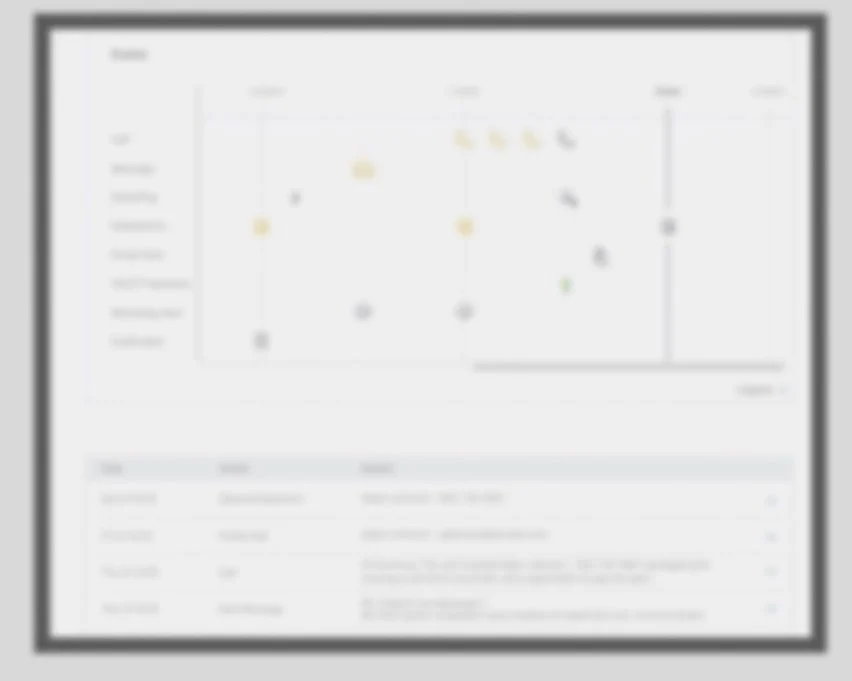The Future of Credit Management: Automation, ROI, and AI Insights
How Automation Enhances Collaboration between Finance and Sales to Improve Customer Experience
John Lockhart, CEO of Billfire, continues the discussion on transforming credit and collections through automation and AI with Rob Shultz of TLCM.
In this episode, they cover:
Proving ROI – Quantifying benefits like reduced DSO, labor efficiency, and error reduction.
Collaboration & Customer Experience – How automation improves coordination between credit, sales, and customer service, building trust and driving retention.
The Role of AI – AI as an augmentation tool, supporting human judgment in nuanced credit decisions.
Listen to the podcast.
Quote-to-Cash: The Hidden Engine of Business Success
John Lockhart, founder and CEO of Billfire, was featured on Credit on the Go Podcast to unpack the complexities and opportunities within the quote-to-cash process. Their conversation explores the integrated journey from quotation to collecting good funds, revealing the essential value that credit management brings to organizations and the evolving role of the credit manager in today’s fast-paced business environment.
John Lockhart, founder and CEO of Billfire sits down with host Bob Shultz on the Credit on the Go Podcast, sponsored by the Trade Credit & Liquidity Management. In this initial segment, John unpacks the complexities and opportunities within the quote-to-cash process. Their conversation explores the integrated journey from quotation to collecting good funds, revealing the essential value that credit management brings to organizations and the evolving role of the credit manager in today’s fast-paced business environment. Listen here.
How Can Automation Turn AR Chaos into Clarity?
Collections chaos looks like this: overlapping emails, inconsistent notes, forgotten follow-ups, and a constant game of catch-up. It’s frustrating for your team and damaging to your bottom line.
Collections chaos looks like this: overlapping emails, inconsistent notes, forgotten follow-ups, and a constant game of catch-up. It’s frustrating for your team and damaging to your bottom line.
You know the signs — your collectors are buried in manual tasks, customers are confused about what they owe, and finance leaders are left wondering why DSO isn’t improving.
The truth is, most AR chaos stems from a lack of structure. And the solution isn’t more people — it’s smarter processes.
Automation introduces clarity by creating consistent workflows, centralized records, and real-time visibility. When your AR operations run on automation, every task is tracked, every message is logged, and every invoice is easy to access.
Billfire was built for exactly this challenge. Our platform simplifies the collections process from end to end. With one login, your team can see the full customer picture — invoices, notes, contact history, and payment behavior — all in one place.
Reminders go out on time. Follow-ups are organized. And your team knows exactly what to do next. No more guessing. No more wasted time.
This clarity has a ripple effect. Your collectors are more confident. Your customers are more informed. And your cash flow becomes more predictable.
Chaos doesn’t fix itself — but with automation, you don’t have to live with it. Billfire replaces guesswork with a smart, streamlined collections experience that helps everyone win.
Could Better Visibility Be the Key to Faster Payments?
When it comes to improving collections, many companies focus on tactics: more reminders, stricter payment terms, better call scripts. But often, the root problem is a lack of visibility.
When it comes to improving collections, many companies focus on tactics: more reminders, stricter payment terms, better call scripts. But often, the root problem is a lack of visibility.
If your collectors can’t easily see which invoices have been opened, who they’ve spoken to, or what actions have already been taken, they’re working in the dark. That creates inefficiency — and leads to missed opportunities to collect faster.
Let’s face it: the modern collections environment is fast-paced and high-volume. Customers expect clarity and convenience, and your team needs tools that support both.
Better visibility means knowing exactly where each invoice stands. It means seeing payment trends by customer, being able to prioritize by risk level, and understanding the full context of each account. It’s about eliminating guesswork.
With Billfire, you get more than just a ledger. You get a real-time visual map of each account — complete with communication history, invoice activity, and next best action prompts. That means your team can follow up faster, resolve disputes proactively, and create a consistent experience for every customer.
Customers benefit too. When they receive clear, timely reminders — backed by context and accuracy — they’re more likely to pay promptly. And when questions do arise, your team can respond with precision.
Visibility isn’t just a nice-to-have. It’s the foundation for faster payments, better customer relationships, and improved performance across your AR process. Billfire gives you that.
Is Your AR Process Holding You Back? Here Are 5 Warning Signs
Your accounts receivable (AR) workflow shouldn’t feel like guesswork. But for many companies, especially those with a growing customer base or a lean team, the AR process becomes a daily grind. If your team is constantly reacting instead of planning, it’s time for a reset.
Your accounts receivable (AR) workflow shouldn’t feel like guesswork. But for many companies, especially those with a growing customer base or a lean team, the AR process becomes a daily grind. If your team is constantly reacting instead of planning, it’s time for a reset.
Here are five warning signs that your AR process is holding you back — and what you can do about it.
1. Manual follow-ups are draining your team
If your collectors spend hours each day chasing invoices via phone or email, that’s time not spent analyzing trends, managing risk, or improving customer relationships.
2. There’s no real-time visibility into collections activity
When leadership can’t answer, “Where do we stand on collections today?” without pulling multiple reports, your AR health is at risk.
3. Sales and finance are misaligned
Disputes over invoice accuracy or unclear payment status often result in unnecessary friction between departments — slowing down response time and hurting the customer experience.
4. Your team is overworked and under-supported
Burnout is common in AR teams that don’t have systems in place. If you’re losing top performers or your team is regularly working late, it’s a red flag.
5. Customer communication is inconsistent or duplicated
Have you ever sent two reminders on the same day from different people? It’s not just unprofessional — it damages trust and delays payment.
If any of these sound familiar, it’s time to evaluate your tools. Billfire is designed for the way collections actually work. One login, one screen, and a complete picture of each customer’s payment history, contact record, and communication trail. Your team sees what’s been sent, what’s been said, and what to do next — without confusion or crossed wires.
With Billfire, you can identify and address the inefficiencies that hold you back — and set your collections process up to scale.
What’s the True Cost of Collections on Your Time, Trust, and Talent?
When accounts receivable (AR) processes break down, the damage runs deeper than just cash flow. It’s about people, perception, and performance. Collections inefficiency doesn’t just cost time — it impacts trust between departments and stretches your team thin.






